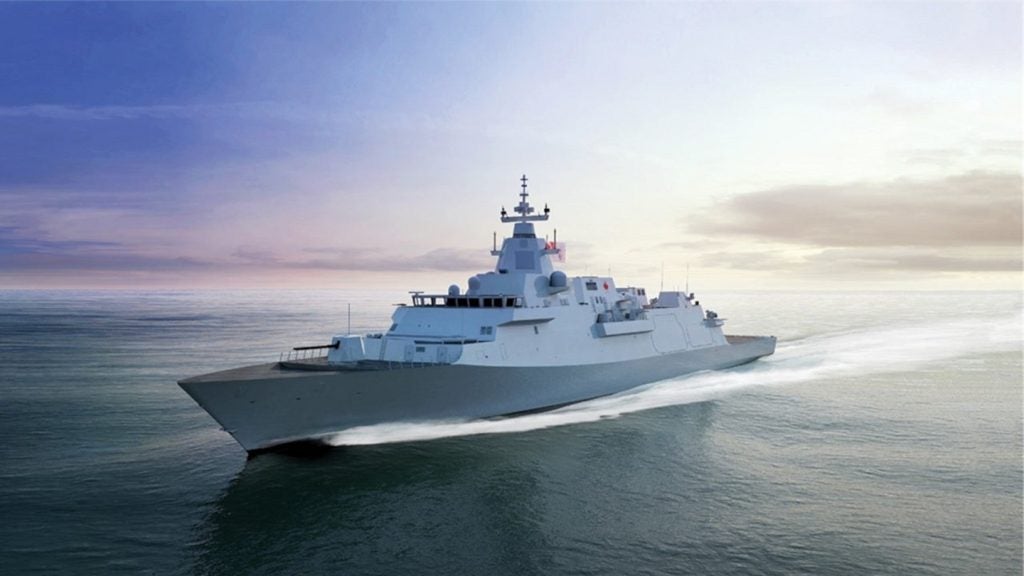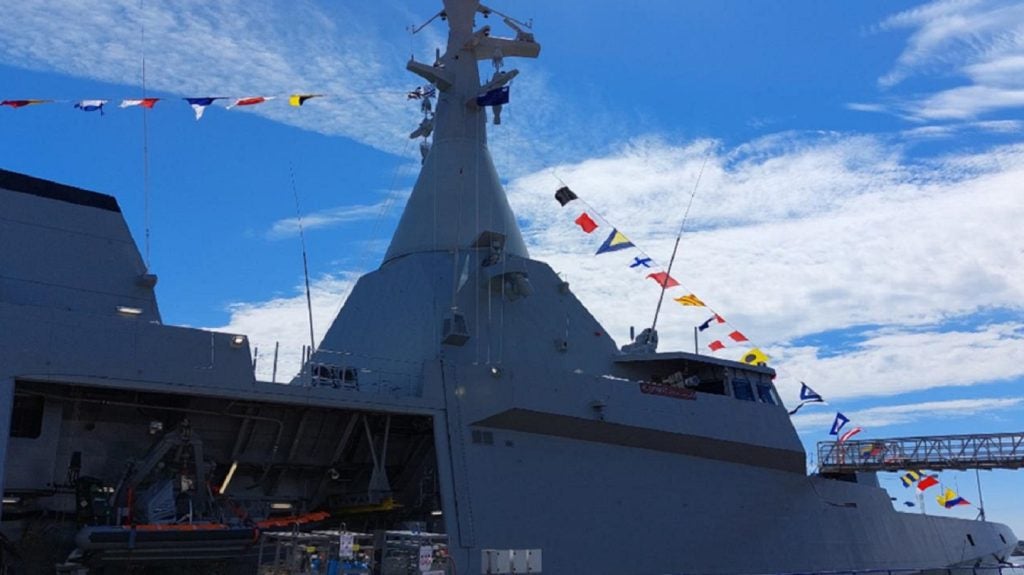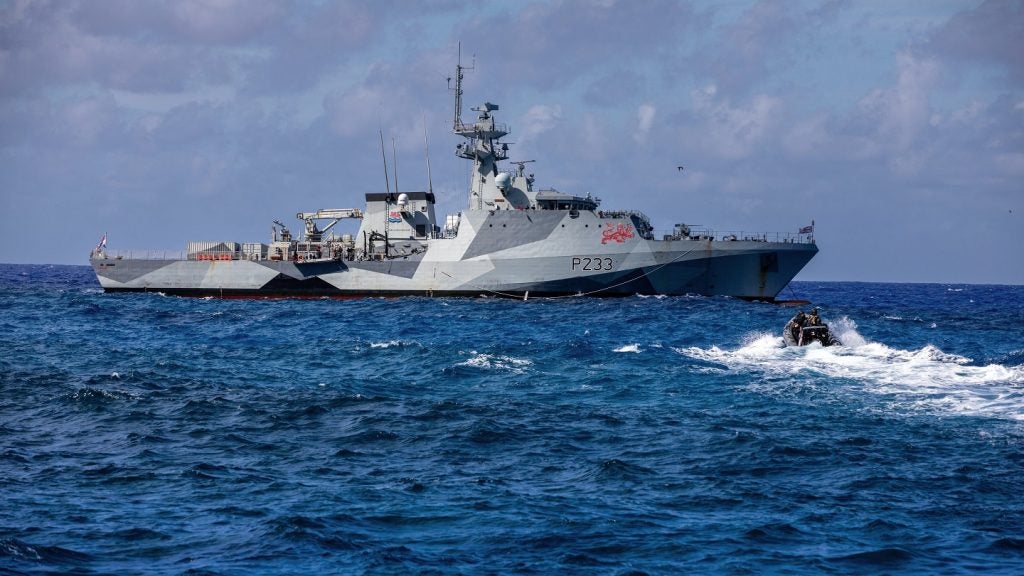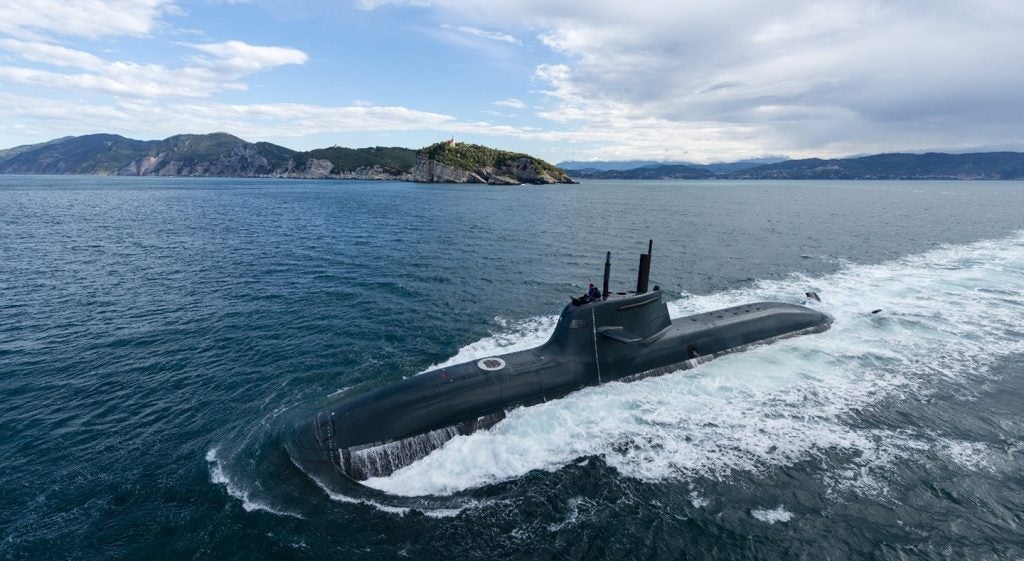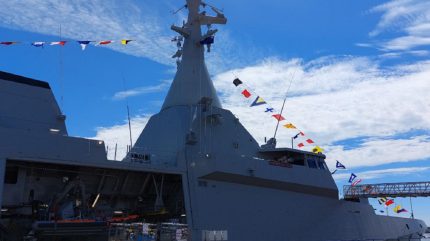
The United Arab Emirates (UAE) has taken delivery of a second Gowind corvette from French defence prime Naval Group, with the vessel and crew to continue operational training ahead of its transit to Abu Dhabi later in July 2024.
The new corvette, Al Emarat, was manufactured by Naval Group at its Lorient shipyard and launched in May 2022. The vessel started sea trials in October 2023, around the same time as the first-in-class corvette, Bani Yas, was delivered.
It is expected at Al Emerat will arrive in the UAE in August, where it will begin to take up operations with the UAE Navy.
The delivery ceremony of the Al Emarat, ordered by the UAE to Naval Group, took place on 27 June 2024, in the presence of an official delegation of the UAE Navy led by the deputy commander of the UAE Navy, Brig Abdulla Al Mehairbi.
During French President Emmanuel Macron’s November 2017 visit to the UAE, the two countries officially announced that Abu Dhabi had chosen to acquire the Gowind corvette, with the initial build of two vessel with two additional platforms on option.
The projected contract allocation for four units of these corvettes over 2023–33 is expected to amount to approximately $1.7bn, with an anticipated per unit price of approximately $425m.
In focus: the Gowind corvette
In total, ten Gowind corvettes have been delivered to domestic and international customers, including Egypt, the UAE, and Argentina. The Gowind platform design is split into three distinct variants: a 1,000-tonne offshore patrol vessel, a 2,500 tonne corvette, and a 3,500 tonne light frigate.
However, national specifications and outfitting varies depending on requirements, and create a wide displacement band of the vessels manufactured to date.
The type delivered to the UAE Navy is the Gowind 2500 variant, which has a slightly increased displacement of around 2,800 tonnes and a length of 102 metres.
Exact equipment details are uncertain, although Naval Group states the Gowind 2500 design is able to be fitted with a 76mm main gun, and up to two 20mm secondary weapons systems.
The design can also accommodate a 16-cell vertical launch system for MICA surface-to-air missiles and 2 x 4 quad-canister MBDA MM40 Exocet missile launchers for anti-ship warfare.
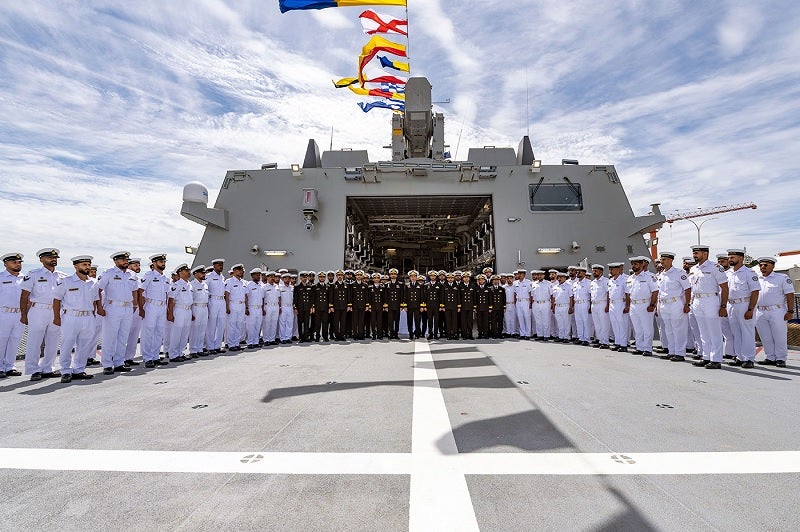
All Gowind designs can be fitted with Naval Group’s Panoramic Sensors and Intelligence Module (PSIM), which was developed specifically for the programme. The PSIM is distinctly visible in available imagery of the UAE’s Gowind corvettes.
PSIM combines several functional chains of the combat system from sensors to computing capabilities and operator consoles. Because PSIM is a modular part of the ship it can be built separately, activated, tested, and used for training ashore prior to integration on the hull.
The use of an integrated mast has a number of benefits over more standard sensor superstructures, such as the conventional layout of a US Navy Arleigh Burke-class destroyer including reduced radar cross section and improved ergonomics.
A spokesperson from Naval Group told Naval Technology’s sister publication Global Defence Technology in June that in addition to the need for 360° coverage on PSIM, “strong transmitters and sensitive receivers are positioned on the same vertical, so that they don’t pollute each other from an electromagnetic compatibility point of view. Some antennas need zenithal coverage, which means no obstacles at maximum elevation.”
Additional reporting by Andrew Salerno-Garthwaite and Tim Fish.




